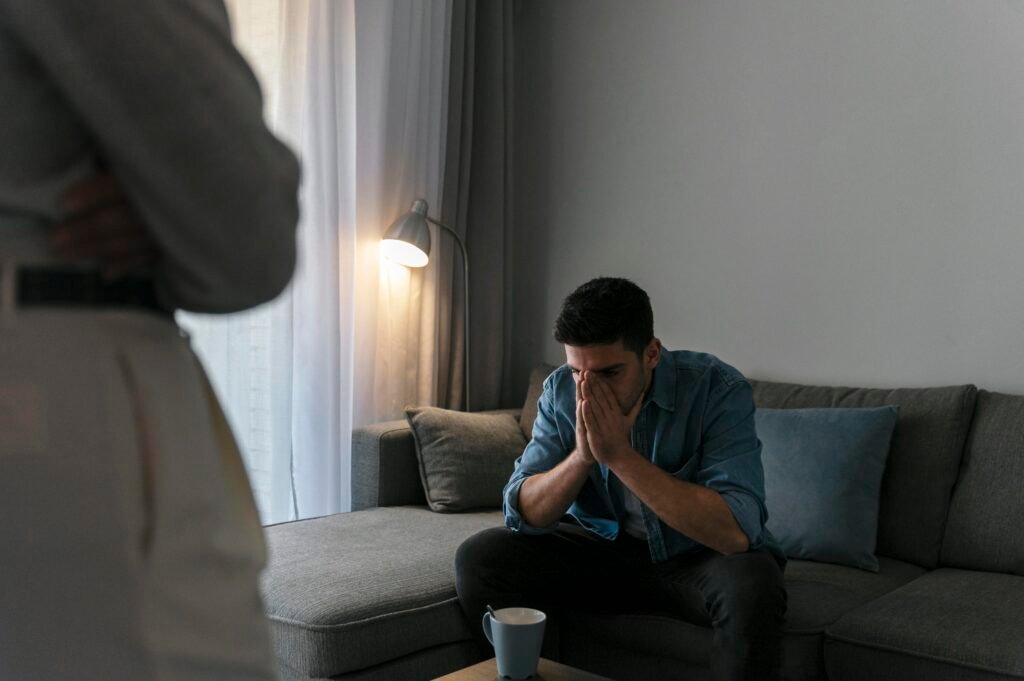
Mental health challenges like depression and anxiety affect millions of people around the world, yet they often go unspoken or misunderstood. While feeling sad or stressed occasionally is a part of life, when these feelings become overwhelming or long-lasting, they may indicate a deeper issue.
This blog will help you understand what depression and anxiety really are, how they differ, what causes them, and — most importantly — how to manage them with compassion and practical strategies.
What is Depression?
Depression is more than just “feeling sad.” It’s a serious mood disorder that affects how a person feels, thinks, and functions in daily life.
Common Symptoms of Depression:
- Persistent sadness or emptiness
- Loss of interest in activities once enjoyed
- Fatigue or low energy
- Changes in appetite (eating more or less)
- Trouble sleeping or oversleeping
- Difficulty concentrating
- Feelings of guilt, hopelessness, or worthlessness
- Physical aches and pains without clear cause
- Thoughts of self-harm or suicide
Note: Not everyone experiences all these symptoms. Some may have physical symptoms, while others experience emotional numbness.
What is Anxiety?
Anxiety is the body’s natural response to stress or danger. But when it becomes constant, excessive, or irrational — and starts interfering with daily life — it may be an anxiety disorder.
Common Symptoms of Anxiety:
- Excessive worry about everyday situations
- Restlessness or feeling “on edge”
- Racing heart or rapid breathing
- Trouble focusing or sleeping
- Muscle tension or stomach issues
- Avoiding situations due to fear or nervousness
- Panic attacks (sudden intense fear with physical symptoms)
Depression vs. Anxiety: What’s the Difference?
Although they can occur together, depression and anxiety are different:
| Feature | Depression | Anxiety |
|---|---|---|
| Mood | Sadness, emptiness, hopelessness | Worry, fear, nervousness |
| Energy | Low energy, fatigue | Restlessness, over-alertness |
| Thought Pattern | Negative thoughts, worthlessness | What-if thinking, fear of future |
| Physical Signs | Sleep/appetite changes, body pain | Sweating, heart palpitations, nausea |
Many people experience symptoms of both at the same time — known as comorbid depression and anxiety — which can make daily functioning even more difficult.
Causes & Risk Factors
There’s no single cause, but several factors can contribute:
1. Biological Factors
- Imbalance of brain chemicals (neurotransmitters like serotonin, dopamine)
- Hormonal changes (e.g., during puberty, pregnancy, menopause)
- Genetics: A family history increases risk
2. Psychological Factors
- Low self-esteem
- Perfectionism or negative thinking patterns
- Childhood trauma or neglect
3. Environmental Triggers
- Chronic stress (financial, work, relationship)
- Loss of a loved one
- Abuse or violence
- Isolation or lack of social support
Coping Strategies That Can Help
While professional help is important, there are also many self-care and coping techniques that can support healing and reduce symptoms:
1. Talk to Someone
Whether it’s a therapist, trusted friend, or family member, opening up can reduce emotional weight. You don’t need to go through it alone.
2. Establish a Routine
Depression and anxiety can make life feel chaotic. A simple daily routine — wake up, move your body, eat balanced meals — provides structure and stability.
3. Practice Mindfulness
Mindfulness or meditation helps calm racing thoughts and bring attention to the present moment. Just a few minutes a day can reduce anxiety and improve mood.
4. Exercise Regularly
Even a 20-minute walk can release endorphins and improve your mental state. Exercise is a natural mood booster.
5. Limit Stimulants
Reduce caffeine, alcohol, and sugar — all of which can worsen anxiety and disrupt sleep.
6. Set Small Goals
Don’t pressure yourself to do everything at once. Celebrate small wins — like getting out of bed, showering, or taking a short walk.
7. Journaling
Write down your thoughts, worries, or what you’re grateful for. It can help identify negative patterns and improve emotional clarity.
8. Connect with Nature
Spending time outdoors, even for a few minutes a day, can reduce stress hormones and improve mental well-being.
When to Seek Professional Help
If symptoms are severe, persistent, or interfering with daily life, it’s time to reach out for professional support.
You may benefit from:
- Therapy or counseling (like Cognitive Behavioral Therapy or Talk Therapy)
- Medication (antidepressants or anti-anxiety meds prescribed by a psychiatrist)
- Support groups, either in person or online
Remember, seeking help is not a weakness — it’s a courageous and healthy step toward healing.
Supporting a Loved One with Depression or Anxiety
If someone you care about is struggling:
- Listen without judgment
- Offer gentle support, not pressure
- Encourage them to seek help
- Check in regularly, even with a simple message
- Educate yourself to better understand what they’re going through
Final Thoughts
Depression and anxiety are not signs of personal failure or weakness — they are real, treatable health conditions. With understanding, compassion, and the right support, healing is possible.
If you’re struggling, please know this: you are not alone, and things can get better. Small steps, taken daily, can lead to real, lasting change.
